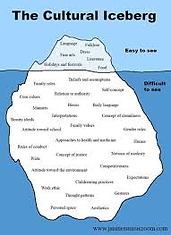



How do you measure Global Competency?
As a Multilingual Teacher, I have had numerous cultural competency courses, but I always felt something was missing. The accountability? The depth? A way to measure competency? I couldn't quite put my finger on it. Through the Fulbright Teachers for Global Classrooms program, something "clicked" for me. I learned there are
In learning this , I realized many of my trainings and lessons have not addressed all four domains which explains why I always felt something was missing.
The provide international goals for teachers to gear their lessons around- touching on topics such as gender/equality issues, care for our water, poverty, and peace. The cultural competency iceberg also provides a visual for what I was feeling- much of what was being taught and appreciated was SURFACE LEVEL. We need to go deeper than language and food, each culture, group, country, PEOPLE deserve that. It's through that stretching that we truly learn and see the beauty that is PEOPLE, and the similarities we all have in common.
I also learned that Cultural Competency can be measured. It's not a race, but rather a journey. The allows you to see where you are at and gives ideas of how to further your journey. As an educator, it's important to me to further my personal journey in order to help my students on theirs.


Global Competency Assessment Tools
The US Dept of Education has resources for teachers and families as well as policy and laws related to pubic education. There are also tons of resources to use and check out!
The Organization for Economic Co-operation and Development (OECD) is a forum for data, analysis and public policy. They work with over 100 countries across the world to build a cleaner, stronger, safer, and more inclusive world.
Colorin Colorado is a website that provides bilingual resources for teachers and students as well as families. They feature wonderful stories and lessons. My ML students love them!
The National Association for Bilingual Education works to serve teachers and families supporting bilingual students. The website has information on advocacy, conferences, and teaching resources.
Asia Society works to educate and advocate throughout Asia and the world across policy, arts, culture, education, climate and more.
Learning for Justice is the site that was formerly Teaching Tolerance. The site features a monthly newsletter, posters, lessons and other resources to promote global education.
Primary Source is a global education website that uses a global lens for all domains and disciplines at all educational levels. Many resources and collaboration opportunities are available through the site.






